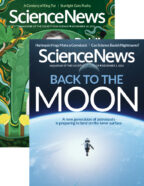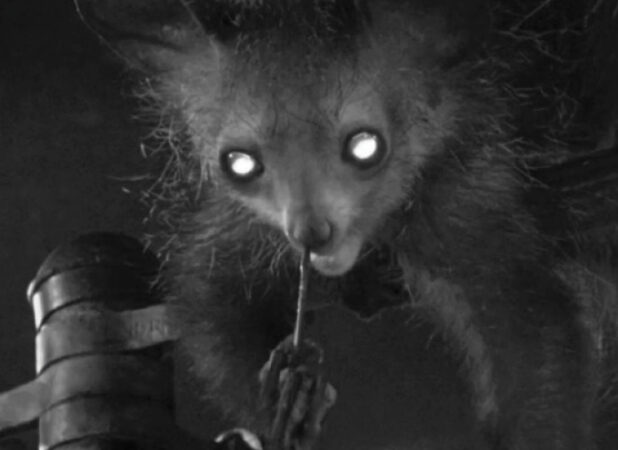This post was originally published on this site

In full swing
The swaying feeling in jazz music that compels feet to tap may arise from near-imperceptible delays in musicians’ timing, Nikk Ogasa reported in “Jazz gets its swing from small, subtle delays” (SN: 11/19/22, p. 5).
Reader Oda Lisa, a self-described intermediate saxophonist, has noticed these subtle delays while playing.“I recorded my ‘jazzy’ version of a beloved Christmas carol, which I sent to a friend of mine,” Lisa wrote. “She praised my effort overall, but she suggested that I get a metronome because the timing wasn’t consistent. My response was that I’m a slave to the rhythm that I hear in my head. I think now I know why.”
On the same page
Murky definitions and measurements impede social science research, Sujata Gupta reported in “Fuzzy definitions mar social science” (SN: 11/19/22, p. 10).
Reader Linda Ferrazzara found the story thought-provoking. “If there’s no consensus on the terms people use … then there can be no productive discussion or conversation. People end up talking and working at cross-purposes with no mutual understanding or progress,” Ferrazzara wrote.
Fly me to the moon
Space agencies are preparing to send the next generation of astronauts to the moon and beyond. Those crews will be more diverse in background and expertise than the crews of the Apollo missions, Lisa Grossman reported in “Who gets to go to space?” (SN: 12/3/22, p. 20).
“It is great to see a broader recognition of the work being done to make spaceflight open to more people,” reader John Allen wrote. “Future space travel will and must accommodate a population that represents humanity. It won’t be easy, but it will be done.”
The story also reminded Allen of the Gallaudet Eleven, a group of deaf adults who participated in research done by NASA and the U.S. Navy in the 1950s and ’60s. Experiments tested how the volunteers responded (or didn’t) to a range of scenarios that would typically induce motion sickness, such as a ferry ride on choppy seas. Studying how the body’s sensory systems work without the usual gravitational cues from the inner ear allowed scientists to better understand motion sickness and the human body’s adaptation to spaceflight.
Sweet dreams are made of this
A memory-enhancing method that uses sound cues may boost an established treatment for debilitating nightmares, Jackie Rocheleau reported in “Learning trick puts nightmares to bed” (SN: 12/3/22, p. 11).
Reader Helen Leaver shared her trick to a good night’s sleep: “I learned that I was having strong unpleasant adventures while sleeping, and I would awaken hot and sweaty. By eliminating the amount of heat from bedding and an electrically heated mattress pad, I now sleep well without those nightmares.”
Pest perspectives
In “Why do we hate pests?” (SN: 12/3/22, p. 26), Deborah Balthazar interviewed former Science News Explores staff writer Bethany Brookshire about her new book, Pests. The book argues that humans — influenced by culture, class, colonization and much more — create animal villains.
The article prompted reader Doug Clapp to reflect on what he considers pests or weeds. “A weed is a plant in the wrong place, and a pest is an animal in the wrong place,” Clapp wrote. But what’s considered “wrong” depends on the humans who have power over the place, he noted. “Grass in a lawn can be a fine thing. Grass in a garden choking the vegetables I’m trying to grow becomes a weed. Mice in the wild don’t bother me. Field mice migrating into my house when the weather cools become a pest, especially when they eat into my food and leave feces behind,” Clapp wrote.
The article encouraged Clapp to look at pests through a societal lens: “I had never thought of pests in terms of high-class or low-class. Likewise, the residual implications of [colonization]. Thanks for provoking me to consider some of these issues in a broader context.”

